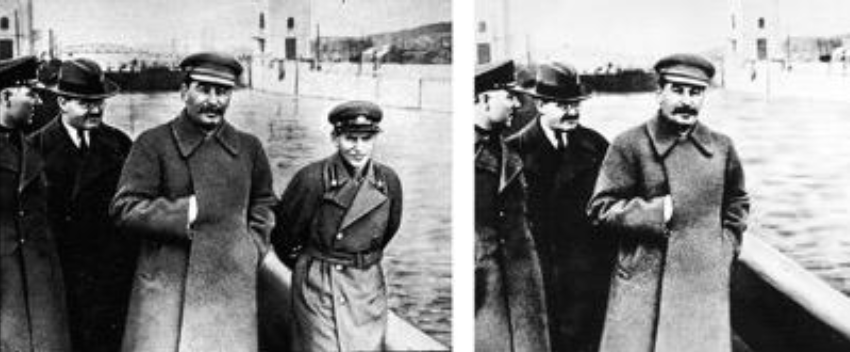People have a tendency to associate disinformation with totalitarian regimes. For example, after his rise to power in 1929, Soviet Premier Joseph Stalin had photographs “doctored” to remove political rivals that had been assassinated or imprisoned.

Photo-retouchers hand-etched or scratched the negatives, or layered photographic negatives on top of one another.

Stalin, like other authoritarian leaders such as Adolf Hitler and Benito Mussolini, understood that controlling narratives about the past was critical to their maintaining absolute control in the present.
References — for more information on Stalin’s use and abuse of photography, see, David King, The Commissar Vanishes: The Falsification of Photographs and Art in Stalin’s Russia (London: Tate, 2014). Image credits: top photo, Soviet officials Kliment Voroshilov, Vyacheslav Molotov, Joseph Stalin, and Nikolai Yezhov walk along the banks of the Moscow-Volga Canal, April 1937. Yezhov was later “unpersoned.” Fine Art Images/Heritage Images/Getty Images & AFP/GettyImages. Bottom photo, Nikolai Antipov, Sergei Kirov, and Nikolai Shvernik, were all erased after losing favor with Stalin. “Fifteenth Leningrad Regional Party Conference in 1924/5.” Tate Archive by David King, 2016/Tate, London/Art Resource, NY. Background theme image from Shutterstock.
